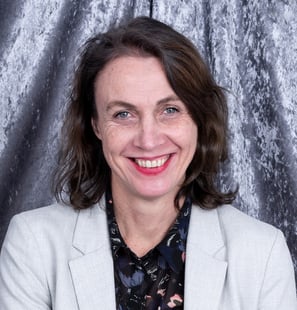

ANIMAFEST PRO | ANIMAFEST SCANNER VIII | SIMPOZIJ O SUVREMENOJ ANIMACIJI | Panel 2 - ANIMATION IN PUBLIC SPACES
New Ways to Perceive Animation: Site-specific Installations and Interventions in Public Spaces by Female Artists - Martina Tritthart (FH Joanneum - University of Applied Sciences and FH Burgenland - University of Applied Sciences, Austria)
Panel 2 - ANIMATION IN PUBLIC SPACES
08/06, UTO 14:00 – 14:30, Kino Tuškanac
Artists like Rose Bond, Birgitta Hosea, rosalie, Rachel Walls and Starsky are paradigmatic for an increasing number of women working with animation in temporary installations relating to specific locations in the urban environment. Yet, they are frequently overseen and underrepresented in literature, research and press. One of the reasons is that compared to most male artists, female artists working in public space are still outnumbered. Another reason I will discuss in detail seems to be the theoretical background and philosophy the artwork of female artists imply. Although they differ in many ways, such as techniques, aesthetics and concepts, they all have in common to refer to social issues they want to discuss through their artwork in public. To be fair, one has to point out that there are also numerous artworks dealing with social critical topics by male artists not being spared being neglected. In the society of spectacles that we live in, it seems that the majority prefers a passive way of consuming art, diving into an immersive virtual world made of much too loud sounds and images. In her installations, US artist Rose Bond is using the windows of significant buildings as screens to project short stories and reflect on the history of the concerning city. The artist questions the perception of animation in public space when coexisting with architecture and refers to the phenomenology of Gaston Bachelard and Maurice Merleau-Ponty, among others. Showing and perceiving animation in public addresses the issue of spatiality, which is not only a mathematical objective spatiality but also a subjective, "lived" and "orientated space". Merleau-Ponty's phenomenology includes a specific description of relational space as a correlation of lived body and the perceived world. Following this concept, Austrian media artist Starsky deals with the relation between architecture, space, projection, images and movements of people in public space. The artist is also known for her live-projecting of feminist text interventions, sometimes as a guerrilla tour on wheels, using powerful large-screen projectors to project on all kinds of urban surfaces. These interventions in public space can be discussed as live animation compared to the performance *dotodot dash* by London based media artist Birgitta Hosea. The artist invited people to participate in experiencing uncanny places and wastelands at night and actually co-create her art piece. Besides engaging and making animation accessible in public space, female artists also discuss central problems in the Anthropocene age, such as the species extinction of the animal kingdom. *Marathon der Tiere* is an audiovisual installation by the German stage designer and visual artist rosalie at the lichtsicht 5, the Projection Biennale in Bad Rothenfelde curated by Peter Weibel. For the video projection, the artist was using real images, animations and scientific-technical data material of different animals. Female artists working in public space can also be found in interdisciplinary groups, but therefore run an even bigger risk of not being noticed or recognized. Australian artist and animator Rachel Walls is a member of the interdisciplinary collective tranSTURM of Australian and international artists, where she was among others responsible for the animation of the film *Light_Space* produced for the Pullman Facade at the Sydney Olympic Park. Working in collaborations opens the field of animation and is enhancing deep practice development. Like Rose Bond and Birgitta Hosea, Rachel Walls is also a researcher, thus documenting her experience and reflection as an artist and an academic.
Dr. Martina Tritthart works as an artist, curator and researcher in Vienna, Austria. Her work includes installation and media-art as well as filmmaking. It has a prominent focus on light as a medium, related to the perception of spaces. For her abstract animation film solar mechanic 1.1 she received the Hubert Sielecki award. Martina Tritthart is member of the SAS Animationstudies, ASIFA Austria, Künstlerhaus and one of the two curators of the Freies Kino program there. She completed her Ph.D. on Light Spaces - Spatial Models of Perception at the University of Technology in Graz and teaches since 1999. As assistant professor she worked at the Institute for Spatial design at the TU Graz and in the program “Space and Design-Strategies” at the University of Art and Design Linz. Currently she is a lecturer at the FH Joanneum - University of Applied Science and also the FH Burgenland - University of Applied Science.


